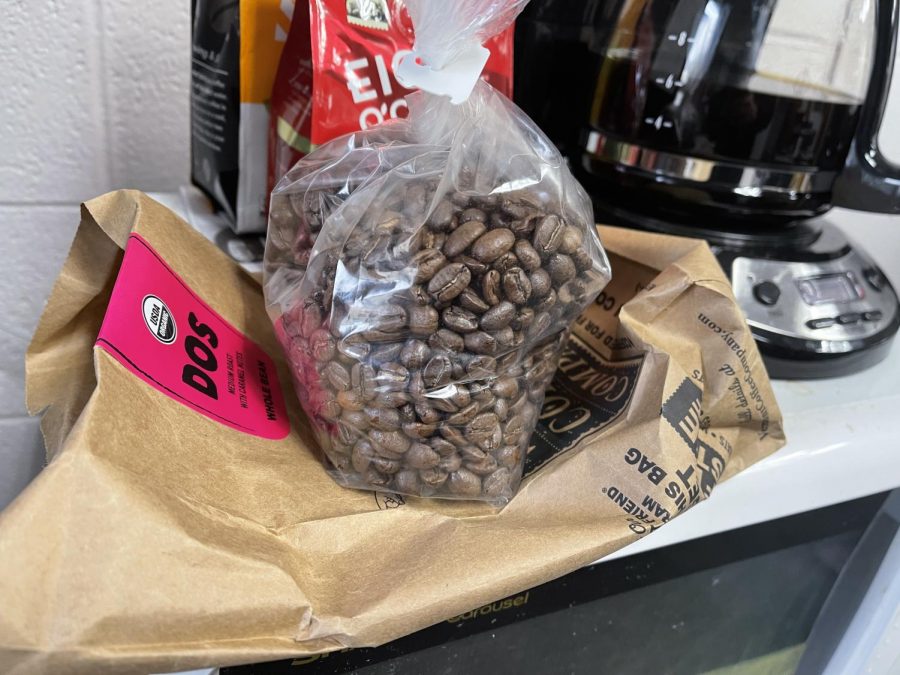Why Your Coffee Habits May Be Giving You Depression
March 11, 2021
I seldom drink caffeinated beverages – perhaps once every two weeks – but I’ve noticed that every time I consume the chemical, I experience an intense burst of euphoria that lasts for a couple of hours after my first sip. Pondering this anomaly made me wonder: if my biweekly 40 milligrams are enough to give me a multi-hour high, are those two-cup-a-day hipsters constantly riding on a wave of bliss, and could I hijack my sullenness by increasing my levels of caffeine consumption? My curiosity about this sensation (and the energy that accompanied my coffee high) motivated me to research what exactly caffeine is and why it makes me feel so darn good.
According to my Google dive, caffeine does its magic by impersonating the neurochemical adenosine, which helps signal to our bodies that we need to go to sleep when its concentration reaches a certain level. Our bodies monitor levels of the chemical through receptors, particularly the A1 receptor. Caffeine, however, mimics adenosine’s size and shape so well that it can enter into these receptors without activating them, effectively blocking the receptors from monitoring adenosine levels and enabling other neurochemicals, such as dopamine, to move around more freely without being reabsorbed into our bodies.
This blockage of the reabsorption of dopamine leads to elevated levels of the compound in our brains. This is fine in short, infrequent bursts, but sustained high concentrations of the molecule could be problematic. Dopamine is a neurotransmitter that is released when we expect a reward: if we associate a certain situation with pleasure, our brains release dopamine, a motivation chemical, every time we are in that situation again. Constant exposure to high concentrations of the molecule causes our dopamine receptors, which monitor levels of dopamine in our brains, to become dulled and weakened. Consequently, we require increasingly higher amounts of dopamine to get the same motivational high.
This model is evident in users of social media platforms like Instagram and Facebook. A major reason why social media is so fun and addictive is its ability to generate large amounts of dopamine in users’ brains in a short amount of time: users see a funny post, experience pleasure, trigger dopamine, scroll, rinse, repeat. With increasing use, many social media users become unmotivated for and desensitized to alternative sources of pleasure and require longer scrolling sessions to produce decreasingly euphoric highs – a sign of dulling dopamine receptors.
In theory, the same thing should happen to chronic caffeine consumers. As a result of extended exposure to high concentrations of the pleasure molecule, frequent drinkers often need to up their dosages to get the same caffeinated rush – they build up tolerances. Coffee addicts frequently become reliant on their jitter juice to concentrate and act sociably; without it, they are anxious, angry, and agitated. “Don’t talk to me before I’ve had my coffee,” anyone?
Unfortunately, coffee may not be the end-all-be-all solution to bad moods and its high may only be sustainable in the short-term. However, it’s important to note that my assumptions were theoretical applications of a concept (dopamine overexposure) to a field (coffee) in which it has not yet been studied extensively. So far, I’ve found no research to corroborate my claims, and it is likely that I am overlooking something important.



Nate Lowry • Mar 26, 2021 at 4:19 pm
Good article, but out of curiosity, did you know that studies often misrepresent their data to get clicks? This is why studies will either praise foods like coffee as a harmless drink, while other studies make coffee seem like a poison. It’s a result of a system that favors interesting sounding headlines over actual science.